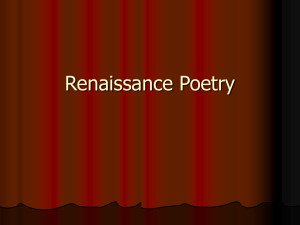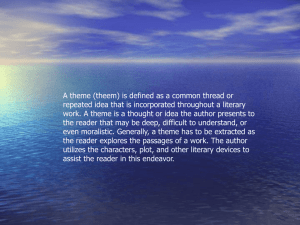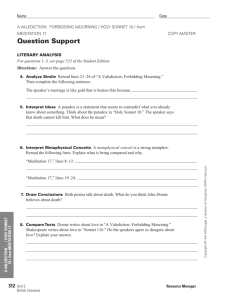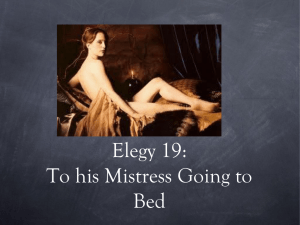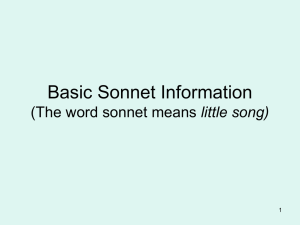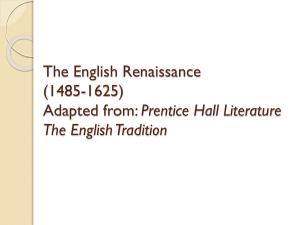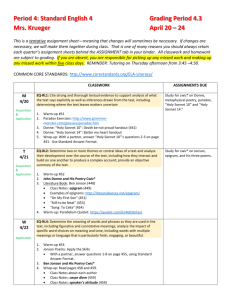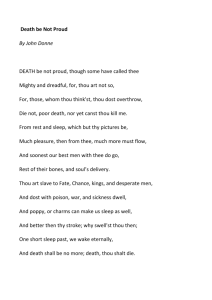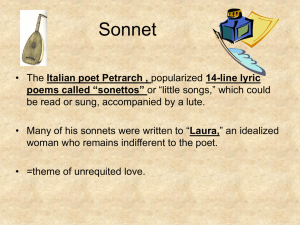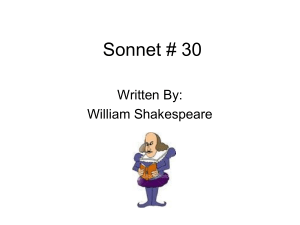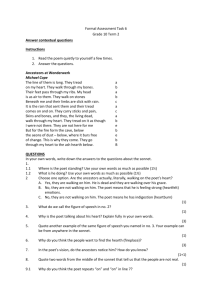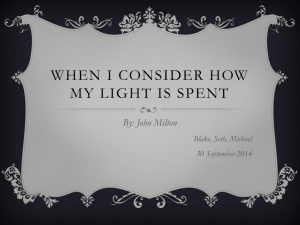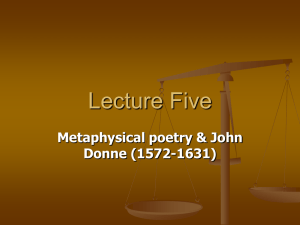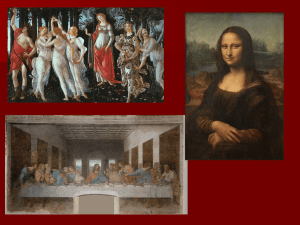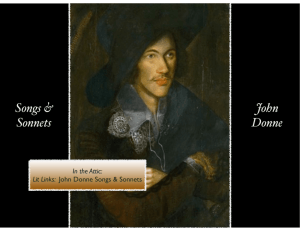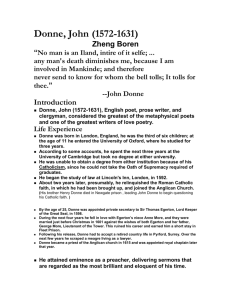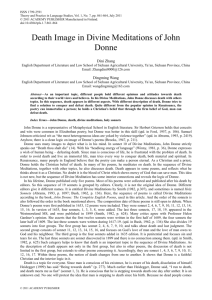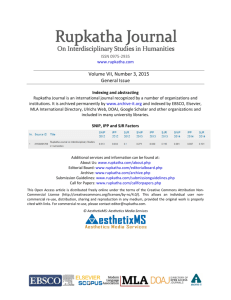Renaissance Poetry
advertisement
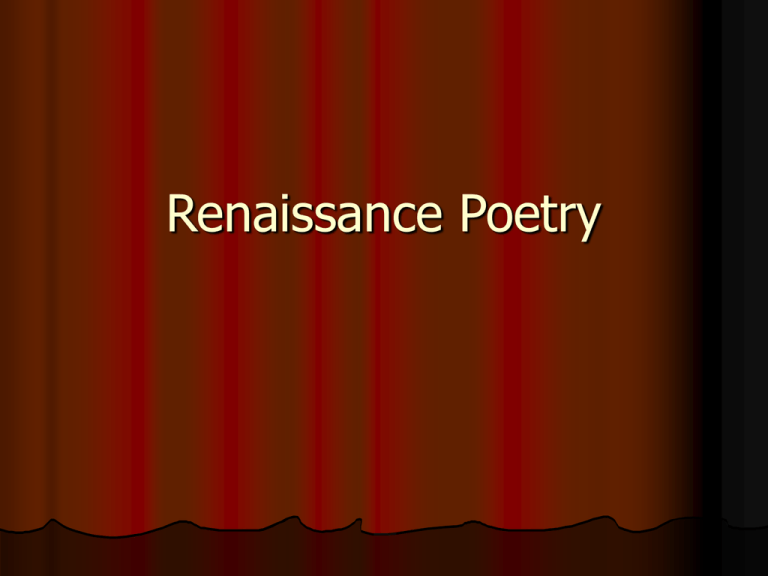
Renaissance Poetry Sonnet Basics 14 line Lyric Poem - Octave (8 lines) Sestet (6 lines) 3 quatrains followed by a Couplet (2 lines) Rhyme Scheme Volta: (Italian: “turn”) the turn in thought in a sonnet that is often indicated by such words as But, Yet, or And yet. Sonnets 3 forms English (Shakespearean) Consists of 3 quatrains and a final couplet Couplet provides a final commentary on the subject in the 3 quatrains Rhyme Scheme: abab cdcd efef gg Italian (Petrachan) Has an octave and a sestet octave presents a problem or raises a question; rhyme scheme of Sestet presents the solution or comments on the problem; rhyme scheme of cdcdcd or cdecde abbaabba Spensarian - Interlocking rhyme scheme: abab bcbc cdcd ee Same structure as Shakespearean sonnet Each form is slightly different, but all keep the same basic format of 14 lines Carpe Diem Poetry and Cavalier Poets Yes, it translates to “seize the day”, but why is that important? Especially to this time period? The idea that people should think for themselves and if they make a mistake, then they will learn from them Robert Herrick – “To The Virgins…” “The Passionate Shepherd to His Love” Pastoral Poetry Characteristics Shepherds in a rural setting Tend to use formal, courtly speech in meters and rhyme scheme Idealistic Often involve the message “carpe diem” “The Passionate Shepherd to His Love” “The Nymph’s Reply to the Shepherd” mimics this idea; more sarcastic and realistic “Whoso List to Hunt” by Sir Thomas Wyatt What type of poem is this? Italian Sonnet Brought the Italian sonnet form to British literature Refers to Anne Boleyn as the deer Caesar is a referenced Hind (deer) is symbolism as king’s property Metaphysical Poets Used elaborate metaphors to explore life’s complexities What is another name for an extended metaphor? CONCEITS Common themes of love, death, and religious devotion Examples? John Donne; Ben Jonson Marked by unconventional imagery Think! Love and Compass?!?! Metaphysical con’t. Metaphysical poetry and conceits Metaphysical conceits often use JARRING comparisons, often using things not really considered to be poetic at all Ex. “A Valediction:Forbidding Mourning” What does Donne compare love to, and why is this significant? Poems on your test Sir Thomas Wyatt – “Whoso List to Hunt” Petrachan sonnet, a mix of pastoral and carpe diem, however the speaker knows that he cannot Sir Edmund Spenser – Sonnet 75 Eternizing conceit Shakespeare – Sonnet 18, 116, and 130 All contain the Theme of love; Sonnet 130 is different because it’s sarcastic Poems on Test, con’t. Marlowe – “The Passionate Shepherd to His Love” Pastoral in nature; urges his love to be spontaneous and tempts her to come and live with him “and be my love” Raleigh – “The Nymph’s Reply to the Shepherd” Mirrors Marlowe’s poem Directly answers his proposals in his poem, with use of Marlowe’s own phrases Poems on test, con’t. Herrick – “To the Virgins, Make Much of Time” What category does this fall under? *Hint: It is more than one! Donne - “A Valediction:Forbidding Mourning” What does Donne compare love to, and why is this significant? Poems on test, con’t. Donne – Holy Sonnet 10 What is the conceit (metaphor) present in this poem? *Death is compared to sleep… but what message does this suggest? Should Death be feared? Why not?

